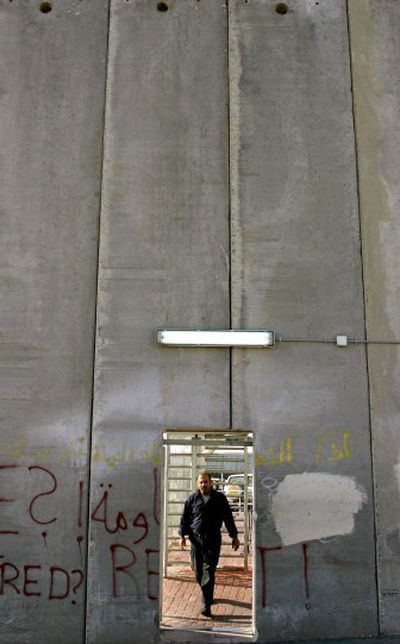Israeli fence a model for U.S.?

JERUSALEM – America can look to Israel as a valuable test case as it contemplates construction of a fence along the Mexican border.
The Jewish state is largely achieving its goal of keeping out Palestinian suicide bombers through a sprawling complex of fences, electric sensors and concrete slabs that snake in and out of the West Bank. But building the barrier has been a gut-wrenching process, fraught with political and diplomatic hurdles, that has worsened Israel’s relations with its neighbors.
To be sure, there are key differences. Most important, the Israeli structure frequently juts into territory claimed by the Palestinians. The American fence would run along a recognized border.
Yet Mexican reaction to the U.S. plan sounded strikingly similar to long-standing Palestinian complaints that the solution is cruel, humiliating and fails to address deeper problems straining relations.
“I don’t think there is any parallel here because the U.S. does not occupy Mexican territory,” said Palestinian lawmaker Saeb Erekat, who has led past peace negotiations. “That said, concrete walls and fences will not make good neighbors. Trust, mutual cooperation and understanding are the fences that make good neighbors.”
Israel began construction of the barrier in 2002, at the height of a wave of suicide bombings. The Defense Ministry says about half the 470-mile structure has been built, and it expects to complete work in 2008, depending on ongoing court challenges.
Almost all of the barrier consists of 10-foot-high, electronically monitored fences sandwiched between patrol roads, razor wire and ditches. The remainder, about 5 percent, is made of huge concrete slabs roughly 25 feet tall. The barrier is dotted with watchtowers and checkpoints where people can pass.
U.S. and Israeli officials said they were unaware of any plans for Israel to offer advice or bid for contracts to build the American fence, though that could change.
Throughout history, fences have provided a simple solution for dividing people. The Berlin Wall was perhaps the most famous example, before it was taken down in 1989. Cyprus and Belfast are among other modern-day hotspots where populations have been divided.
The Israeli version has proved quite effective as a security measure.
Since construction began, the number of suicide bombings in Israel has dropped significantly, from 41 in 2002 to five last year, according to Associated Press figures. And although other factors have been at work, including an informal cease-fire by Palestinian militants in 2005, Israeli officials say the barrier has been the key to maintaining calm.
“This is a direct result of the security fence,” said national police spokesman Micky Rosenfeld. “It’s very, very difficult for people to come and go as they please.”
The quiet, however, has come with a price.
Because it juts into the West Bank, the fence has caused severe hardship for Palestinians, who accuse Israel of carrying out a land grab. Many Palestinians have been cut off from farms, hindered from traveling, and blocked from reaching jobs, hospitals and other services inside Israel. Palestinians refer to the barrier as the “apartheid wall.”
The fence also has drawn international condemnation. In a 2004 advisory ruling, the World Court declared it illegal and urged Israel to tear it down. Israeli court challenges have forced officials to change the route.
For years, Israel claimed the barrier was strictly a temporary measure. But the new prime minister, Ehud Olmert, now says the barrier – expected to swallow roughly 7 percent to 9 percent of the West Bank – will be the basis for Israel’s final border. That plan has received a cool reception abroad.
Even if the barrier is finished, there is no guarantee the border will be airtight. Israeli security officials say militant groups are constantly searching for ways to sneak into the country. Thousands of laborers continue to enter in areas where construction is not complete or by traveling in cars with Israeli license plates.
“There is always a possibility that they can hide in a vehicle. It’s the army’s job to make sure they don’t do this,” said Danny Rothschild, head of the Council for Peace and Security, an advisory body of 1,200 former military officers.
Such attempts are only likely to increase as the situation in the Palestinian territories – hit hard by an economic boycott against the Hamas-led government – becomes more desperate, said Mohammed Ishtayeh, head of the Palestinian Economic Council for Development and Reconstruction.
“They aren’t willing to suffer, so they will take risks,” he said.